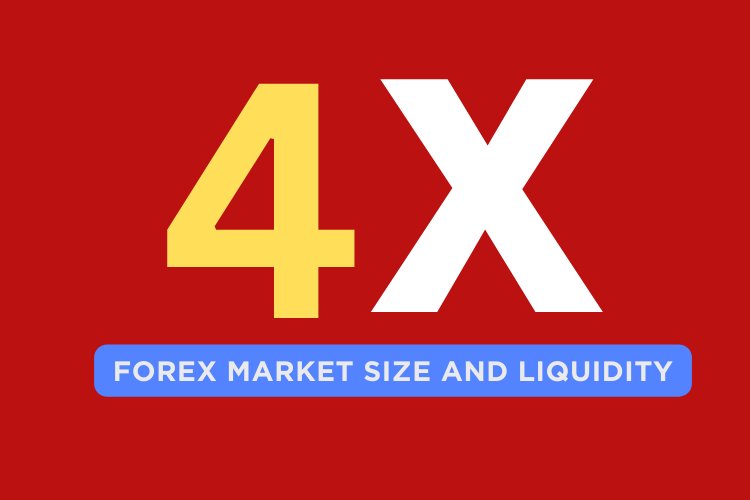Forex Market Size and Liquidity
Discover the vast world of forex trading with Robbie Garnier from WaveTrendZ. Explore the size, liquidity, and unique aspects of the decentralized forex market, its 24/7 global operation, the dominance of the US dollar, and the speculative nature driving its trading volume. Learn how this market facilitates international fund transfers, provides protection against rate fluctuations, and allows for lucrative speculation opportunities.

Forex Market Size and Liquidity
Hello everyone, and welcome to lesson number four with Robbie Garnier from WaveTrendZ. Today, we're going to explore the size and liquidity of the forex market. Let's dive in.
Jump! It's highly liquid!
The majority of forex trading occurs in the interbank market. This market is distinct from other financial markets, such as the New York Stock Exchange or the London Stock Exchange, because it doesn't have a physical location or a central exchange. It is a decentralized market, which means that no single entity owns it. The forex market operates as an over-the-counter (OTC) market, running electronically within a network of banks and non-bank financial institutions (NBFIs) around the clock.
This 24-hour operation means that the forex market is global, with no central hub. You can trade from anywhere with an internet connection. It's the largest and most popular financial market in the world, with a diverse group of individuals and organizations participating.
In an OTC market, traders have the flexibility to choose their trading partners based on conditions, price attractiveness, and the reputation of the counterparty. The US dollar dominates the market, accounting for 84.9% of all transactions, with the euro coming in second at 39.1% and the yen coming in third at 19%. Major currencies occupy the top positions, with the dollar reigning supreme.
The International Monetary Fund reports that the US dollar makes up about 62% of the world's official foreign exchange reserves. The BRICS countries and the expanding economies in Asia, however, are questioning the US dollar's hegemony and challenging this dominance.
Despite this, the US dollar remains the world's reserve currency, largely because the United States has the largest economy. The US also boasts the most liquid financial markets, a stable political system, and is considered the sole military superpower. Additionally, the US dollar is used in half of all international loans and bonds and serves as the medium of exchange for many cross-border transactions, such as oil trading.
However, with countries like Saudi Arabia joining the BRICS, there may soon be an alternative to the petrodollar system.
Now, let's talk about the functions of the forex market. It facilitates the transfer of funds between different countries' currencies, provides short-term credit for international trade, offers protection against foreign exchange rate fluctuations, and allows for speculation.
It's important to note that while commercial and financial transactions do occur, the majority of trading volume is speculative. Traders buy and sell based on short-term price movements, and this speculative trading accounts for over 90% of total volume.
The vast scale of the forex market ensures high liquidity, meaning large volumes can be traded with minimal impact on price. This is beneficial for short-term traders, as it allows for easy price movement within the market. However, market depth can vary based on the currency pair and the time of day.
In our upcoming forex trading sessions, we will discuss how the timing of your trades can affect the currency pair you're trading. For now, let's reflect on what we've learned today.
I'm Robbie Garnier from WaveTrendZ, signing off. I'll see you in the next class. Good luck.



 WaveTrendZ
WaveTrendZ 






















